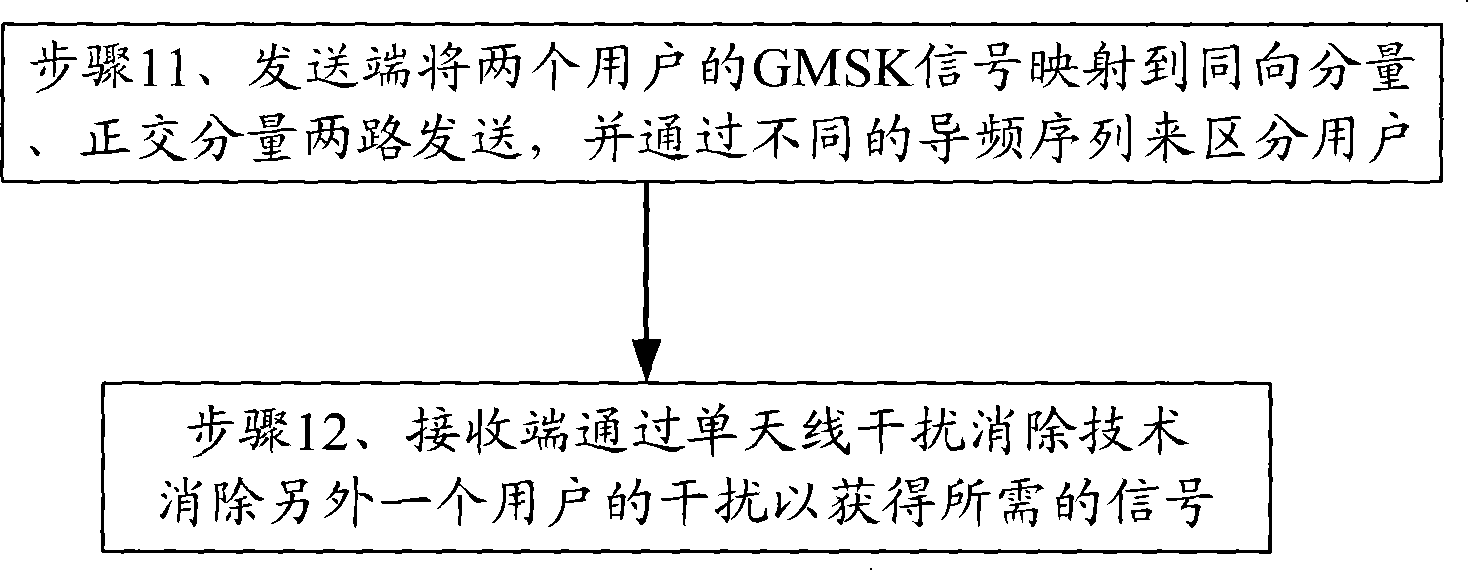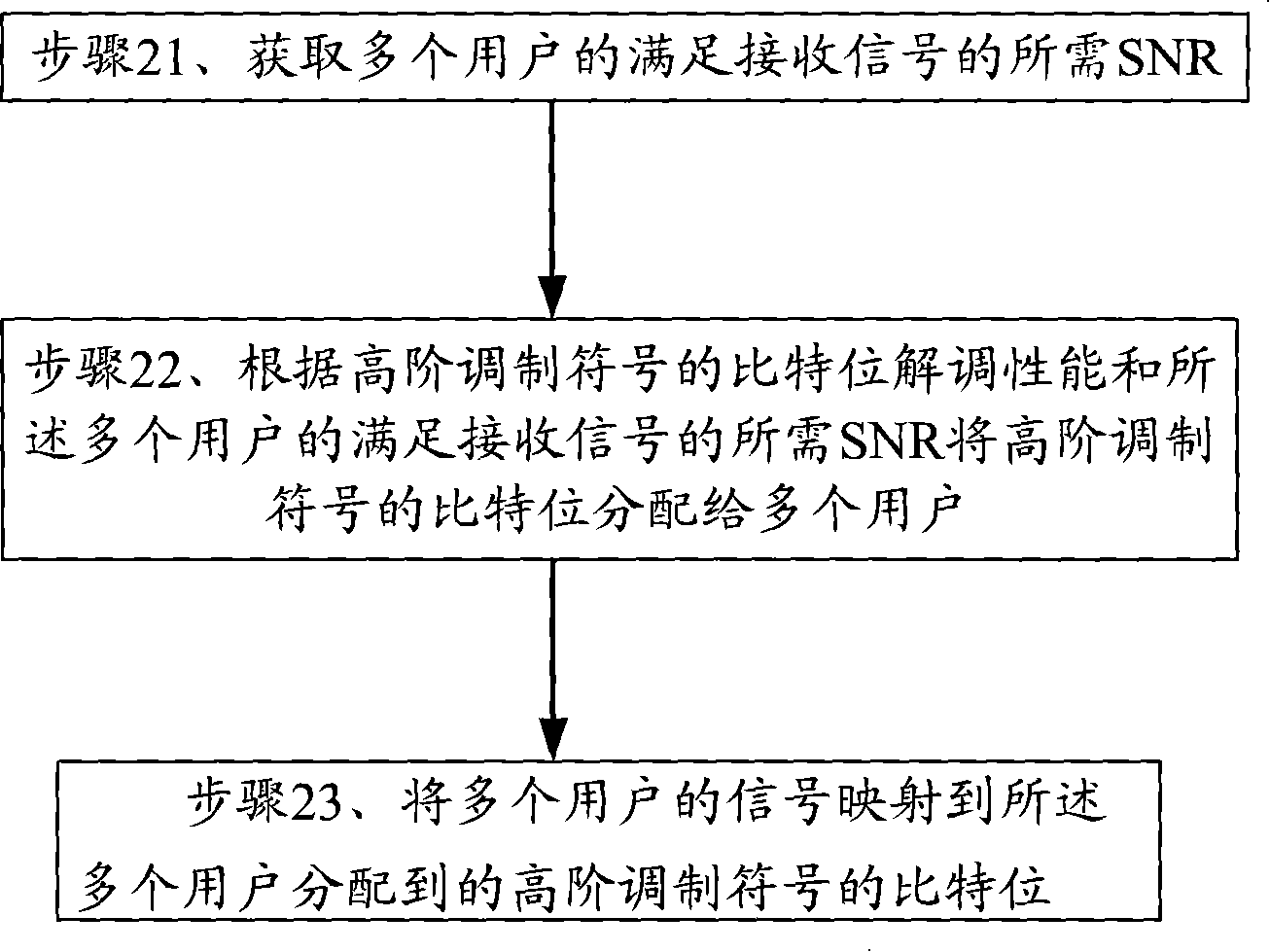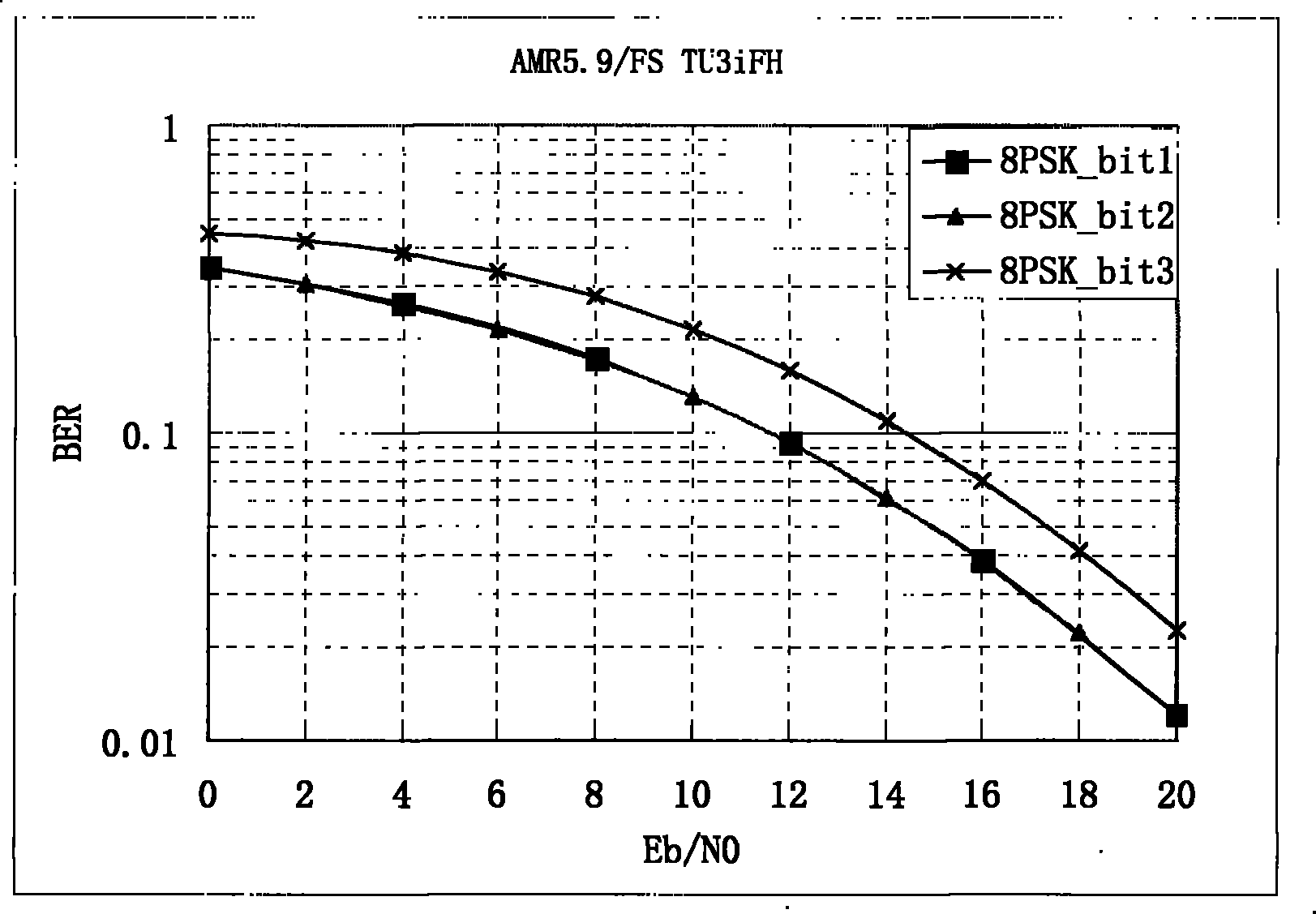Method and device for multiplexing multi-user time slot
A time slot multiplexing, multi-user technology, applied in the field of network communication, can solve the problems of difficult to guarantee communication quality, great interference, affecting the communication quality of users with poor channel quality, etc., to ensure service quality, improve voice capacity, The effect of ensuring communication quality
- Summary
- Abstract
- Description
- Claims
- Application Information
AI Technical Summary
Problems solved by technology
Method used
Image
Examples
Embodiment 1
[0057] Embodiment 1: Embodiment 1 of the present invention provides a method for multi-user time slot multiplexing. This embodiment uses two users as an example to illustrate the specific implementation method.
[0058] The technical scenario of this embodiment is: the high-order modulation method is 8PSK, and the high-order modulation symbol can be 8PSK symbols. For the relevant description of 8PSK, please refer to the relevant regulations of GSM protocol 45.004; assuming that two users are user A and user B, And user A's required SNR for receiving signals is higher than user B's required SNR for receiving signals. The method as Figure 5 As shown, can include:
[0059] Step 51. Obtain the required SNRs of user A and user B that meet the requirements of the received signal.
[0060] Step 52: Allocate the bits of the 8PSK symbols to user A and user B according to the bit demodulation performance of the 8PSK symbols and the required SNR of the user A and user B to meet the re...
Embodiment 2
[0070] Embodiment 2: The specific implementation of the present invention provides another method for multi-user time slot multiplexing. This embodiment uses three users as an example to illustrate the specific implementation method.
[0071] The technical scenario of this embodiment is that the high-order modulation method is 16QAM, and the high-order modulation symbol can be a 16QAM symbol. Of course, in actual situations, the high-order modulation method can also be 32QAM. The implementation method is basically the same as that of 16QAM, and the difference is that 16QAM The symbol has 4 bits, while the 32QAM symbol has 5 bits. The 32QAM symbol can be allocated with more bits, and there are more ways to allocate bits. For the related description of 16QAM, please refer to the GSM protocol 45.004. It is stipulated that the demodulation performance of different bits in 16QAM symbols is similar to the demodulation performance of different bits in 8PSK symbols, that is, the order ...
Embodiment 3
[0081] Embodiment 3: The specific embodiment of the present invention also provides a method for multi-user time slot multiplexing. This embodiment uses two users as an example to illustrate the specific implementation method.
[0082] The technical scenario of this embodiment is that the high-order modulation method is 16QAM, and the high-order modulation symbols can be 16QAM symbols. Assuming that the two users are user A and user B, the order of the two users to meet the required SNR of the received signal is : user A, user B, the method is as follows Figure 7 shown, including:
[0083] Step 71. Obtain the required SNR of user A and user B to meet the received signal.
[0084] Step 72, assign a plurality of bits with high demodulation performance in the 16QAM symbol to users who satisfy the required SNR of the received signal among user A and user B, and allocate a plurality of bits with low demodulation performance in the 16QAM symbol Allocate to user A and user B who m...
PUM
 Login to View More
Login to View More Abstract
Description
Claims
Application Information
 Login to View More
Login to View More - R&D Engineer
- R&D Manager
- IP Professional
- Industry Leading Data Capabilities
- Powerful AI technology
- Patent DNA Extraction
Browse by: Latest US Patents, China's latest patents, Technical Efficacy Thesaurus, Application Domain, Technology Topic, Popular Technical Reports.
© 2024 PatSnap. All rights reserved.Legal|Privacy policy|Modern Slavery Act Transparency Statement|Sitemap|About US| Contact US: help@patsnap.com










